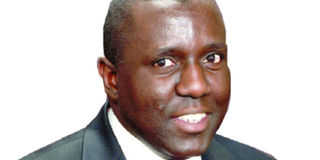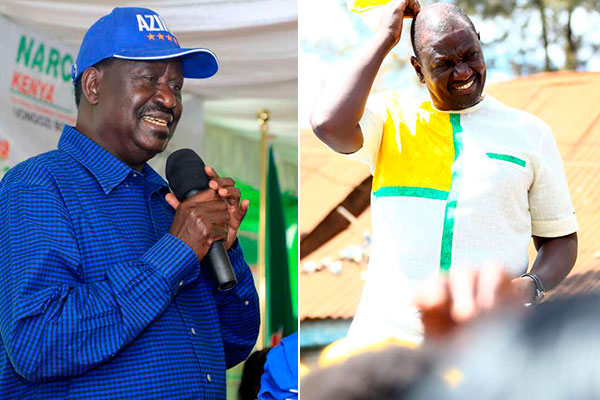Prime
Kenya enters final stages of a high stakes election

What you need to know:
- Raila represents older people, intellectuals to an extent and a group that has largely been outside the duopoly of the pinnacle of power shared between the Kikuyus and Kalenjins since independence.
Kenya’s two leading presidential formations, William S Ruto, 54, the Deputy President, and Raila Amolo Odinga, 77, the former Prime Minister, have chosen their running mates ahead of the August 9 polls.
Party primaries have also concluded without a major crisis. In fact, a number of cabinet secretaries lost primaries in their parties, unable to translate the magic of the ministerial flag into electoral success. Kenyan ministers from colonial times have always operated at another level from their East African neighbours.
The road to 2022 began years ago in 2013 after Mwai Kibaki embraced his former opponent Uhuru Kenyatta whose father appointed him Assistant Minister of Finance in 1963 to succeed him. Kibaki chose Kenyatta over Prime Minister Raila Odinga whose Tosha Kibaki cry prematurely belted out in 2002 brought him to State House in a wheelchair after a debilitating car accident.
In 2017, the Supreme Court in another first cancelled the results of the presidential election. In a 5-2 decision, the Court found there had been significant non-compliance with the electoral laws including a finding that results had not been transmitted electronically as required by the law. Both the Chief Justice David Maraga and his deputy Philomena Mbete Mwilu faced years of tongue lashing for this decision. The President, wary of this decision, took the unusual step of refusing to promote a number of judges who he suspected held contrarian ultra-liberal views to higher courts.
The Kenyatta presidency began as a co-presidency, with a 50/50 portfolio balance between Uhuru and his deputy Ruto. In the National Assembly, it is widely believed Ruto allied MPs from the United Republic Party slightly outnumbered those allied to Uhuru Kenyatta. The former majority leader Aden Duale and now it turns out the Speaker Justin Muturi were Ruto people. The Kibaki presidency also began as a multi-stakeholder presidency, Kibaki a creature of the establishment co-opted Kijana Wamalwa, a charismatic lawyer from Western region, along with Raila Odinga, a veteran of anti-establishment struggles that rocked Kenya after the 1982 coup and 10 years later ended up in the first multi-party elections in Kenya.
With one mishap the 2007 ethnic clashes, Kenya has largely followed a conformist neo-liberal path in its politics. Big politics is fused with big business and foreign commercial interests. A famous Kenyan businessman recently deceased mentioned a stark fact, that success in business required him to ally with a leading politician to grow. So regardless of who wins on August 9th, both candidates represent this entrenched culture.
The Kenyatta family is one of Kenya’s biggest landowners and now straddle major stakes in insurance, banking, agriculture, and tourism. The Panama papers had a small disclosure that they had $30 million in the Cayman Islands but their wealth is nearly all in Kenya. A former Finance Minister and head of Kenya Power Limited are facing charges of stashing $14 million in one transaction on the British island of Jersey, that’s just for comparison purposes.
Big business has thrived in Kenya in the last 20 years. Kenya has a large middle class distributed between the urban working folks and prosperous farmers. But at the base is the working proletariat, jua kali sector whose hopes are firmly entrenched in the “hustler nation” the rags to riches story of Kenyatta’s deputy.
Raila represents older people, intellectuals to an extent and a group that has largely been outside the duopoly of the pinnacle of power shared between the Kikuyus and Kalenjins since independence.
Followers think he is mellower and pragmatic, less cunning, less ambitious and emotionally balanced. He took his supporters first to Daniel arap Moi, then to Kibaki before rallying his troops to three defeats in 2007, 2013 and 2017. William Ruto is counting on being the top vote getter in Rift Valley, tying Raila in Nairobi, picking up Coast and the voter-rich Central region. Ruto’s road to State House passes through Gatundu South. Raila is counting on winning the two ears on Kenya’s map and putting enough pressure to pick up Nyanza, Western, tie in Nairobi, Coast, Eastern and reduce on the margin of loss in the Central region.
Central region, the vote rich nest, has provided two running mates, former Uhuru aide Rigathi Gachagua, a Member of Parliament and the combative former Justice Minister Martha Karua who has not had recent electoral luck but carries a fiery don’t take prisoners message.
Mr Ssemogerere is an Attorney-At-Law and an Advocate.




